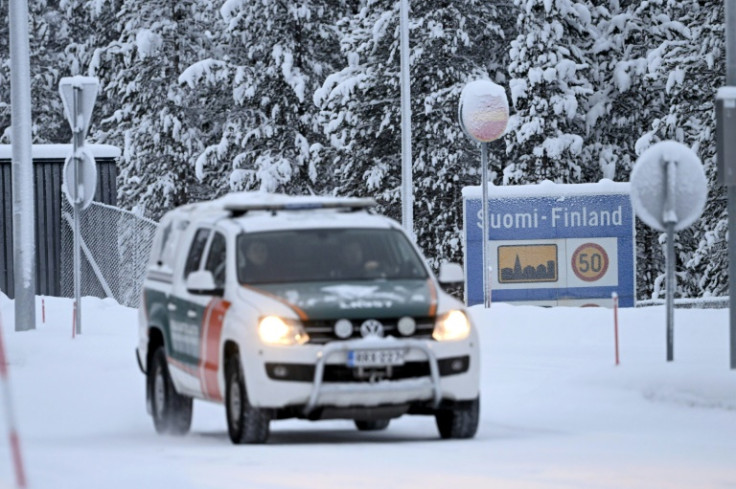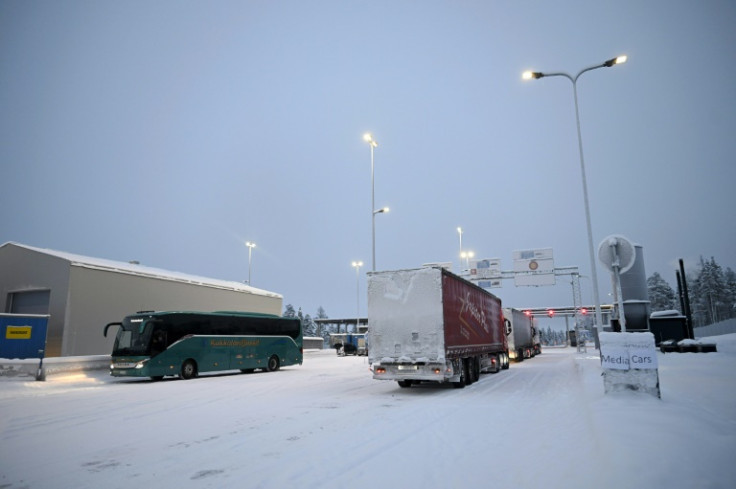
Finland's prime minister said Tuesday the country will shut its last border crossing with Russia, following an influx of migrants which Helsinki claims is a hybrid attack orchestrated by Moscow.
Interior Minister Mari Rantanen said the closure would come into effect overnight between Wednesday and Thursday and last until December 13.
The Nordic country, which shares a 1,340-kilometre (830-mile) border with Russia, has seen a surge in undocumented migrants from third countries seek asylum on its border with Russia in November.
From the start of August, nearly 1,000 migrants have entered Finland without a visa through the eastern border crossing points.
"Finland is the target of a Russian hybrid operation. This is a matter of national security," Rantanen said.
Russian Deputy Foreign Minister Alexander Grushko on Tuesday said Finland's decision to close its border was "simply irrational", according to Russian media outlets.
Last week, Finland's northernmost eastern border station, Raja-Jooseppi in the Arctic, became the sole crossing point with Russia, following the closure of the other seven by the Nordic country.
The Finnish border with Russia is both the European Union's and NATO's external border.
Asylum seekers will only be able to apply for protection at "open border crossing points for air and maritime traffic", meaning ports and airports, according to a government statement.
"This is an organised activity, not a genuine emergency," Prime Minister Petteri Orpo said of the surge.
He added that the "ease with which the migrants found their way to the remote border crossing point at Raja-Jooseppi is also evidence of this".
"It is not just the number of arrivals that is at issue, but the phenomenon itself," Orpo said.
Finland's relations with its eastern neighbour soured after the invasion of Ukraine.
After Finland acceded to the US-led military alliance NATO in April, reversing its decades-long policy of military non-alignment, Russia warned of "countermeasures".
The influx of migrants on its border has pushed Finland to balance its national security with its international obligations.
Last week, the government sought to completely shut the border but the proposal was blocked as disproportionate by Finland's Chancellor of Justice.
While the border can be closed in exceptional circumstances it has to be proportionate and some access points for asylum seekers have to be ensured.
Despite being a drastic measure, the government's proposal to restrict asylum seekers to ports and airports passed scrutiny, and was backed by officials citing intelligence on increasing migration.
Asked whether Finland would let migrants endure freezing conditions without granting them entry across the border, Orpo said that "without the changed policy of the Russian authorities, this phenomenon would not exist".
"We trust the Border Guard's judgement and ability to respond to different situations," Orpo said.
Rantanen said the migrants have "a responsibility in deciding whether they come to the border or not".
"Our message is clear. Do not come. The border is closed," she added.
The Border Guard said that so far the pressure had been focused on the crossing points and not Finland's long wilderness border, most of which has only a light wildlife fence.
Anticipating that Moscow could use migrants as political pressure, Finland in February began building a 200-kilometre fence along its Russian border.
But only three kilometres of the fence is finished.
Even with the border fully closed, it remains uncertain how Finland would deal with those crossing illegally.
From a legal standpoint, a migrant is entitled to submit an asylum application even if they enter illegally.
Orpo said Finland's aim was to normalise the situation on the border "as quickly as possible".
"It is in everyone's interest, including Russia's," he added.









